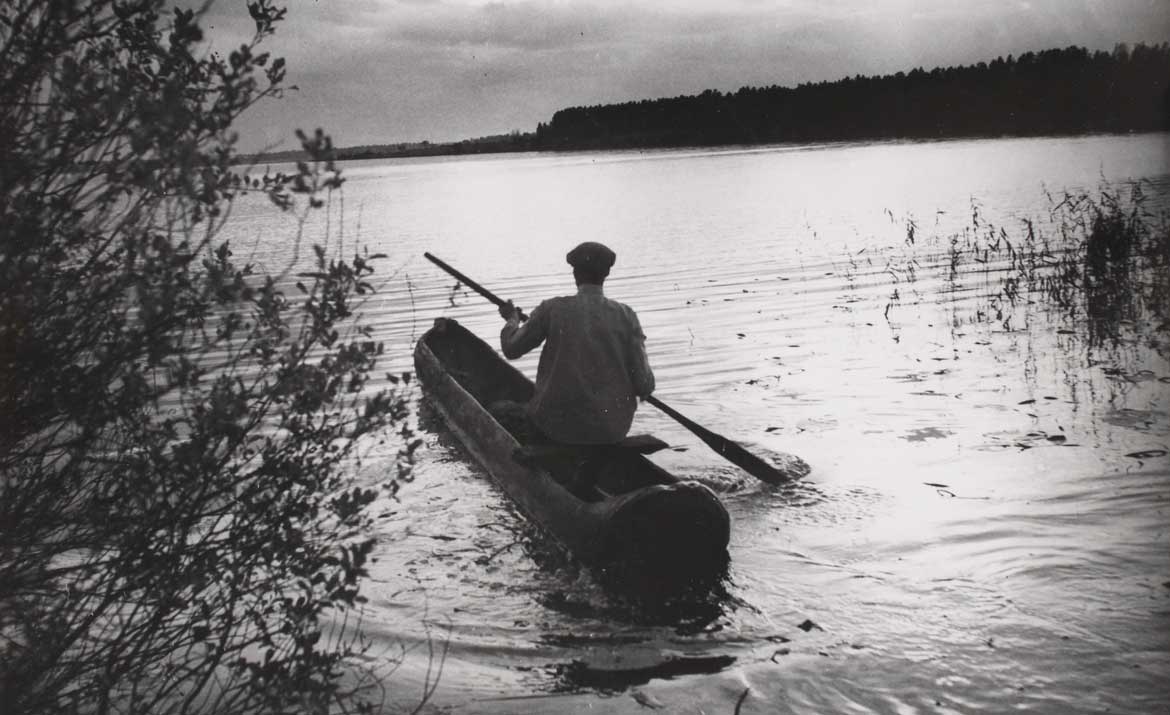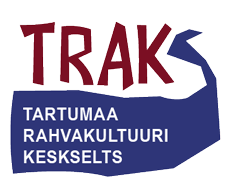Velloini venoizõ seppä
(Building a Ship)
Kati Soon and choir
In Votian
Velloini venoizõ seppä,
laivõseppä lagluõni
vessi tširvellä venettä,
tširve’ellä kultazõlla,
vaskizõlla vartuõlla,
tširves kultanõ kumizi,
vaskivarsinõ elizi.
Iski kõrra, süntü laita,
tõizõ kõrra, tõinõ laita,
kolmannõ, koko venoine.
Too venoi monitapaine,
laivoi kolmekossalliine,
nenä neljäbruussalliine.
Eb õõ veejäissä vezille,
lainõ’õzõ laskijaissa.
Nõizim miä vette veejässi,
lainõ’õzõ laskijassi.
Panin lajja tüttölöitä,
tõizõ lajja poikiloita,
kolmannõ tutilahujõ.
Vanad sõutaad, pääd räpizööd,
tšüsüväd loojalta appia:
“Oo, jumala, üvä jumala,
väänä tuuli Lauka’allõ,
porota tuuli pohjuõssa,
anna airollõ appia!”
In English
Dear brother, boat builder,
Shipwright, my black goose,
Carved a dugout boat with his axe,
With golden blade,
With copper handle,
The golden blade hummed,
The copper handle ringed.
Hit once, a broadside was made,
Hit twice, another broadside,
Hit thrice, a whole boat was made.
The boat is manifold,
The ship is three fathoms long,
The bow has four boards.
There’s no one to take it to the water,
Send it to the waves.
I took it to the water,
Sent it to the waves.
I filled one part with girls,
The other with boys,
The third one with old dodderers.
The old ones row, heads dodder,
Pray to the Lord for help:
“Oh, God, good God,
Turn the winds towards the Lauga River,
Blow wind from the north,
Help the oars!”
In Votian written language
Velloini venoizõ seppe,
laivõseppe lagluõni
vessi tširvelle venette,
tširve’elle kultazõllõ,
vaskizõllõ vartuõllõ,
tširves kultanõ kumizi,
vaski-varsinõ elizi.
Iski kõrra, süntü laitõ,
tõizõ kõrra, tõinõ laitõ,
kolmannõ, koko venoine.
Too venoi monitapaine,
laivoi kolmekossalliine,
nenä neljäbruussalliine.
Eb õõ veejäissä vezille,
lainõ’õzõ laskijaissõ.
Nõizim miä vette veejässi,
lainõõzõ laskijassi.
Panin lajja tüttölöitä,
tõizõ lajja poikiloita,
kolmannõ tutilahujõ.
Vanad sõvvõt, pääd räpissä,
tšüsüväd Loojaltõ appia:
“Oo, jumala, üvä jumala,
väänä tuuli Laukanallõ,
porotõ tuuli pohjuõssõ,
anna airollõ appia!”
The singer recounts how her brother built a fine boat. The singer herself helped to set it afloat and found rowers. This variant here describes how old people rowed the boat. They had no strength to do that and turned to God for help. Young rowers would row so that the oars would bend.
Finnish researcher Matti Kuusi has argued that the song about the boat voyage, which is known in the entire Baltic-Finnic runo song area, is a mythical story about the building of the first boat and the first voyage (Kuusi 1963: 150–153ff; 1980: 225–226). The boat builder is no ordinary human—he could be Väinämöinen or the son of God and the boat cannot be built without a special tree or spell. In the southern regions, where epic ballads were often sung by women, the boat was built by the singer’s brother, making the narration much more realistic. The earliest layer of the song is represented by the image of old and young rowers, which was known in the area from Karelia to Estonia. In the northern runo song area, the hasty voyage continues on the back of a pike and the pike’s teeth are used to craft a psaltery. Instead of hitting the back of the pike, the boat might also hit a rock beneath a city. In the southern regions, the boat voyage is not associated with making a psaltery. The Estonian variant sometimes concludes with trading in a rich city, but the ending may also be embedded with stories about the birth of fishes or catching sacred fish.
T Maťo (Matrjona) Gerassimova, Jõgõperä (Ariste 1960: 42–43, 78–79).
T Oude, Jõgõperä (Axel August Borenius-Lähteenkorva 1877, SKVR III1: 599)
M vadja tüdruk, Jõgõperä (Axel August Borenius-Lähteenkorva 1877, Rüütel 1977: 241, variatsioon).

Timofei Morozov on Lake Jarvikoisjärvi in a dugout boat. Photo: G. Ränk, 1942 (ERM Fk 1007:248).





